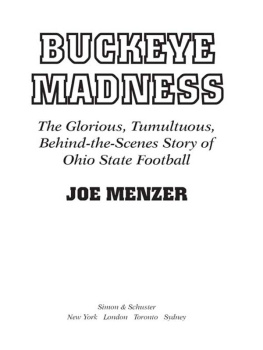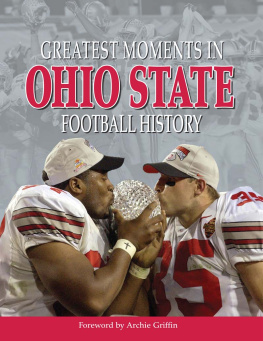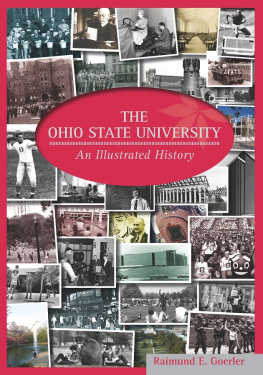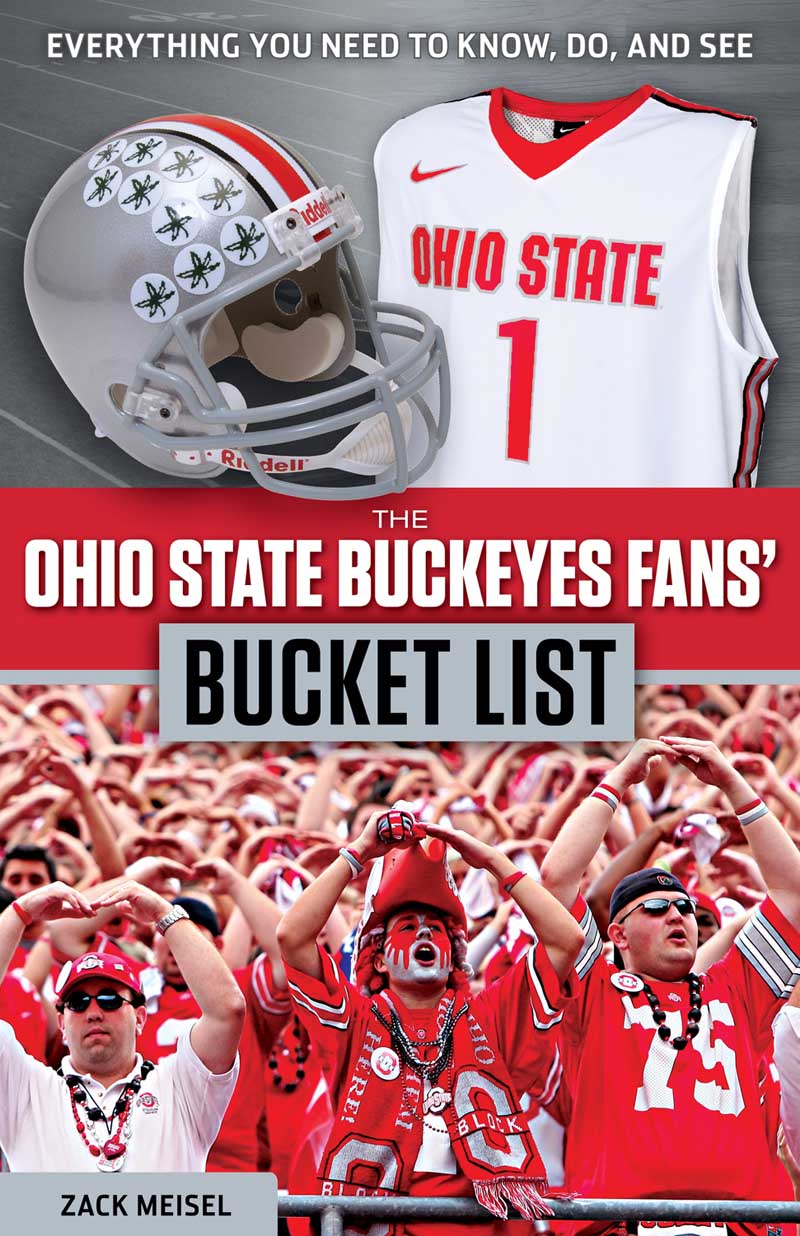
For my sister, Veronica, who deserves recognition for her support, despite never replacing my sunglasses, which she tossed to the bottom of Lake Lanier.
And for Laurel, who has put up with my late nights of writing that occasionally culminate in a loud thud as I, half-asleep, walk into a closed door. Her support and motivation were a driving force behind this book and much more. Ill never forget the first time she saw Ohio Stadium, which could hold about 50 times the student population of her alma mater, Allegheny College.
Contents
Introduction
There is a trail alongside the Olentangy River that weaves through the west side of Ohio States campus. It meanders past Ohio Stadium and Lincoln and Morrill Towers, dips below Lane Avenue, and wanders through Tuttle Park and beyond. It is frequented by joggers, walkers, runners, and bench-sitters.
It is a path I have traveled often, a path quiet and serene enough to permit deep thinking. The first time I navigated the trail, as I passed The Shoe, I reflected upon my first visit to the venue in 2008. The Buckeyesranked No. 9were hosting No. 3 Penn State for a nationally televised night game. I had been handed my credential for The Lantern , the school newspaper, days in advance. When Saturday arrived, I was a wreck. I had attended football games with 70,000 others. But here I was, a 19-year-old kid with no experience in game coverage, tasked with writing about an affair played before 105,000 people. That was too much pressure. So I opted not to go. Who cares? I will never show my face again in The Lantern newsroom. I will ignore every text and call from the sports editor. I will find a new career field. I just could not confront those jitters.
The standards associated with Ohio State football are a gift and a curse for the writers. Anything short of an undefeated season and a national championship can, in some light, be considered a disappointment. Every game carries immeasurable implications. Every misstep could cost the Buckeyes a seasons worth of hope and optimism and expectation. For the writers, that creates plenty of pressure. Every key play and result requires an appropriate level of description and perspective. For those not accustomed to such a degree of tension, it can be intimidating.
I did not want to face that fear. So I sat in my dorm room, staring at my laptop, my leg shaking uncontrollably, my teeth chewing apart whichever fingernail was next. Finally, I decided to walk over to the stadium. I stepped into the press box and peered out at the stands, filled with fans in scarlet. Words cannot do it justice. The roar of the crowd when the Buckeyes stormed the field cannot be described with some lazy choice of onomatopoeia.
I did not have to be convinced again. I did not have to think twice about honoring my duties at Ohio Stadium. Ohio State lost that evening, but I was hooked. I fed off the pressure. The unrelenting energy created by the capacity crowd fueled me with adrenaline. The stress was fun. The early September contest against an overmatched MAC opponent that makes the trek to Columbus primarily for a chance to collect a paycheck? Those are the tough games to cover. Those require more use of the creative part of the brain. The games against Michigan or Michigan State that carry with them a ticket to the Big Ten Championship Game? The events that unfold within those 60 minutes of football often write themselves. Those moments are easier, more enjoyable, and more rewarding to chronicle. The stakes are higher. The crowd is louder. More eyes are watching. I grew to love to embrace that pressure.
I would traverse that trail almost daily, without a care in the world. Aside from the occasional clicking of a bicycle chain or the chirping of a few birds, the path was silent. No noise, no stirring, no pressure. Sometimes, when I would see the Block O that adorns the top of the south stands peeking out above a cluster of trees, I would reminisce about that night, when I almost bypassed my firstand, perhaps, only, if not for my ultimate decisionchance at covering the perennial national championship contender. As soon as I was asked to write this book, that rush returned. Deadlines offered pressure. Interviews and late nights spent writing provided heaps of stress. I would not want it any other way.
Chapter 1. Coaching Stories
Visit Woody Hayes Cabin
Ten miles. Ten twisting miles winding down a wayward path devoid of visibility, with nary a streetlight nor stop sign to impede. The sights along the route are antiquated and unconventional, rural and unsophisticated. A collection of rusty, downtrodden cars, the ignitions long untapped, rest among weeds and tall, untamed grass. A tire covers the hood of a navy sedan parked in front of a patch of woods. A ceramics shop, a bar, and an inn sit atop dirt lots at various junctures along the trail. Farms line both sides of the road, with cows and horses roaming the giant pastures that keep plenty of distance between neighbors.
Ten miles of this, before ultimately reaching the hidden gem of Caldwell, Ohio. Ten miles to Woody Hayes old cabin.
The pathway is easy to overlook. It peeks out just before a sharp left turn on the main road. The rusty gate, innocent yet inviting, hangs ajar, but blends in with the backdrop of leaves, trees, and earth. Up the steep hill lies the log fixture, sold multiple times since Woody died in 1987. The cabin and the quirky town surrounding it are where Woody rushed to escape from football, from work, and from life; where he reconnected with his extended family; where he chatted about school and jobs with the 12 children of Mary Hill, a widowed neighbor.
This, in essence, was home.
He never forgot to come back, said Mabel Schott, Woodys second cousin.
No one in town had seen Woody Hayes since he punched that player and lost his job. Everyone was on the same page, though. No one wanted to prompt that uncomfortable conversation.
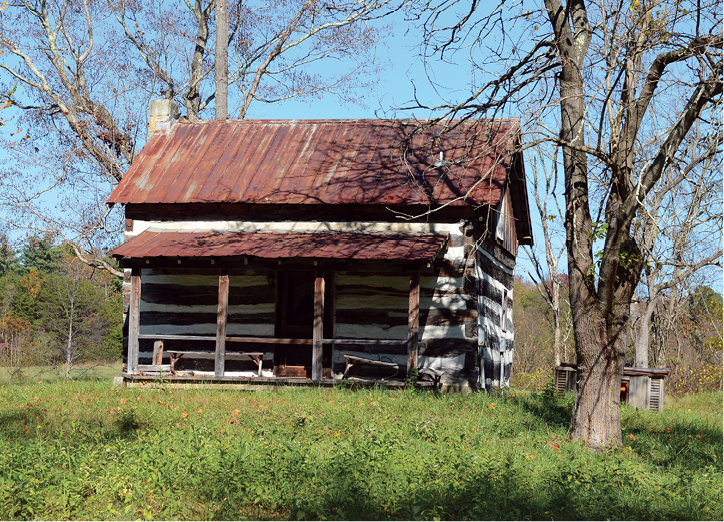
Woody Hayes old cabin sits up a hill in a wooded area in the small, rural town of Caldwell, Ohio.
Gennie Saling knew her husband. She knew all too well of the lack of a filter between his brain and his mouth. So, Gennie warned Ed.
Dont you say anything to him about that, she told him.
Woody always stopped by the Saling residence on his visits to Caldwell. Upon his arrival, the words flowed from Eds mouth with reckless abandon. He approached Woody and asked: What the hell can make a man do that? Gennie shook her head. Of course he asked about it.
On Saturday afternoons during the summer, Woody walked up the street to the bar owned by his cousin and bought everyone drinks. Woody knew every patron at the three bars in town. Everyone in Caldwell knew Woody. Of course, unfamiliarity does not really exist in the small community.
Everybody knows everybody and everybody knows everybodys business, said Schott, whose white front door bears an Ohio State adornment.
In Columbus, where he coached for 28 years, Woody was a daunting, directive dictator. Former Ohio State coach Earle Bruce, who succeeded Woody as the Buckeyes boss, said Woody almost always drove places by himself. But if he rode with you, it was his car and he took over the radio, took over the windows, took over the heat. He took over everything. He was always in control.


